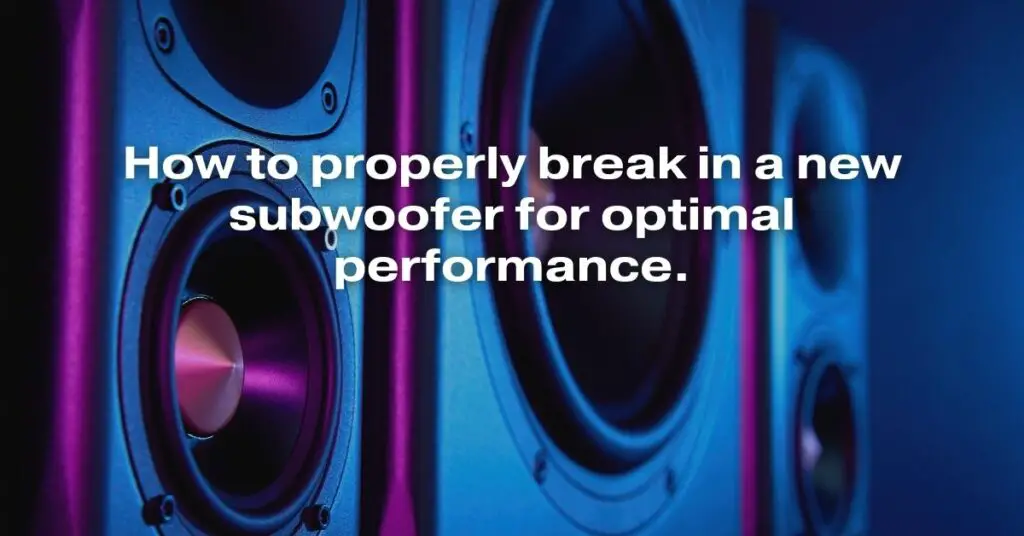Introducing a new subwoofer to your audio setup is an exciting moment for any music enthusiast. However, before you can fully experience the deep, rich bass that your subwoofer is capable of producing, it’s essential to go through a process called “breaking in” or “conditioning” the subwoofer. This process allows the subwoofer’s components to loosen up and reach their optimal performance level.
Why is Breaking In a Subwoofer Important?
A new subwoofer’s components, such as the speaker cone and surround, are initially stiff and rigid. This stiffness can restrict the subwoofer’s movement and limit its ability to produce accurate and powerful bass frequencies. Breaking in the subwoofer gradually loosens up these components, allowing them to move more freely and produce the full range of bass tones.
How to Properly Break In a New Subwoofer
The process of breaking in a subwoofer is relatively simple and straightforward. Here’s a step-by-step guide:
1. Set Up Your Subwoofer Properly
Before you start the break-in process, make sure your subwoofer is properly connected to your audio system and positioned correctly in your listening space. Consult your subwoofer’s manual for specific placement recommendations.
2. Start with Low Volume and Bass-Heavy Music
Begin by playing music with a lot of bass content at a low volume. This will gently exercise the subwoofer’s components without overexerting them. Avoid playing music with sudden, loud bass peaks at this stage.
3. Gradually Increase Volume and Play a Variety of Music
Over the next few days or weeks, gradually increase the volume and play a variety of music genres, including bass-heavy tracks, orchestral pieces, and electronic music. This will expose the subwoofer to a wide range of frequencies and further loosen up its components.
4. Monitor the Subwoofer’s Performance
As you continue the break-in process, pay attention to the subwoofer’s performance. You should notice an improvement in bass clarity, depth, and overall sound quality. If you hear any distortion or rattling, reduce the volume slightly and continue the break-in process.
5. Be Patient
Breaking in a subwoofer takes time and patience. The exact duration depends on the subwoofer’s size, power, and design, but it typically takes anywhere from 10 to 40 hours of playtime.
Additional Tips for Breaking In a Subwoofer
Here are some additional tips to ensure a smooth and effective break-in process:
-
Avoid playing music at excessively high volumes during the break-in period. This can damage the subwoofer’s components.
-
Use a variety of music sources, such as CDs, streaming services, and vinyl records, to expose the subwoofer to different recording qualities and mastering techniques.
-
If you’re not using the subwoofer, turn it off to prevent unnecessary wear and tear.
Conclusion
Properly breaking in a new subwoofer is an essential step in optimizing its performance and ensuring years of enjoyable listening. By following these simple guidelines, you can unleash the full potential of your subwoofer and experience the deep, rich bass that it was designed to deliver.

